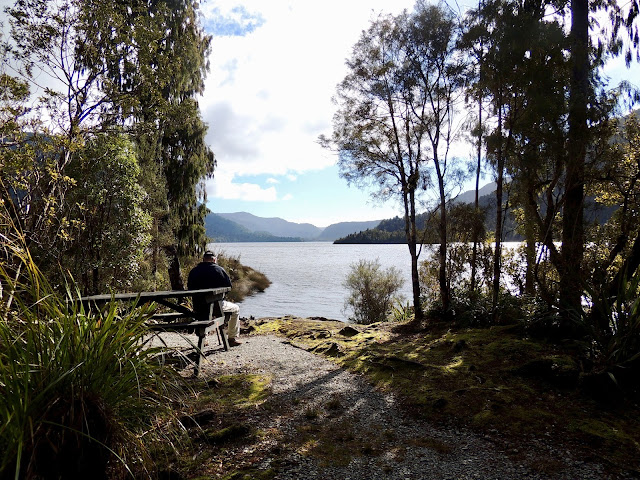We left Hasst yesterday. A vast, virtually impenetrable place that captures my heart each time I visit.
On the road north, Knights Point.
Elephant seals from the Antarctic!
The road south to Haast has a lot more glamour shots, but yesterday morning's drive was sweet as.
Roadside stand--quick, pull over. Art's used to me stopping at every one we see. This time, for honey.
Speaking of honey, I learned something about manuka honey, which is that you should enjoy a little spoonful on its own and not stir it into hot tea because that deactivates the good bits. For tea we've been deeply enjoying the
rata flower honey at right.
It takes about 2.5 hours to drive north to Fox Glacier, our destination, but what a drive.
Here in Fox Glacier we're at a Top Ten campground--the sort of Hilton of NZ campgrounds, with extra nice facilities for showering, laundry, and everything else. You can also stay in a little bach. See the small buildings in this picture?
Here's the communal kitchen, big enough for many many cooks and eaters.
Today's produce
After first meal we're off on a little walk to Lake Matheson, which my map says is two hours round trip on foot. We passed this wee church.
A friend (hi Rob) who visited NZ before we started coming here told me New Zealanders were well-traveled and I've found that to be true. We're now at the end of NZ winter and lots of lodgings have out their NO VACANCY signs, but that doesn't mean they're full. It means the people who run them are off in Tahiti, Bali, or the US on holiday.
They're serious here about no drones. Fox Glacier has several helicopter outifts that take people up to see the (blub, ever-shrinking) glaciers.
After the long walk here Art starts walking to the lake. Hmmm, I think. It's a long way back, but maybe just this one bridge.
It's an exquisite day, the low clouds and mist giving the impression of a painting.
A rock slab covered in sphagnum moss.
I call to Art to turn around. The Queen of Flat Whites is overdue. Look at this polished stone, which sits in the self-serve drinking water fountain.
Too warm for me inside so I step out.
On the return, patina and texture.
After seven miles, we're finally back and the rainbows come out. We're clean and our clothes are laundered for the drive tomorrow to Okarito, a wee beach outpost on the west coast with a sweet community campground that has no electricity. We visited for one night last time, but now we're ready with inverters and solar panels and everything we need to stay longer.



























































